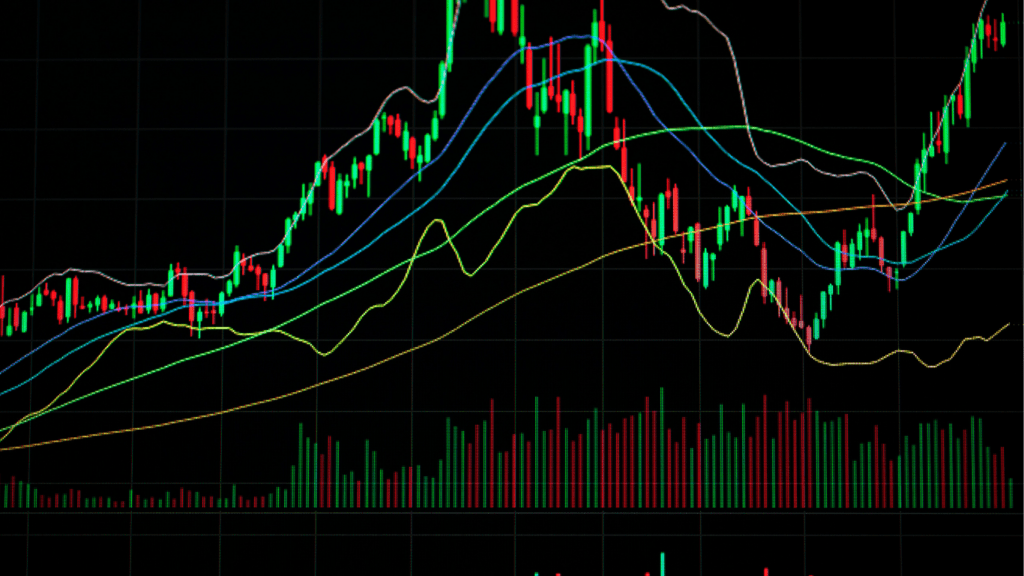Understanding Bull and Bear Markets
Recognizing bull and bear markets is crucial for an investor’s strategy. Knowing these phases helps me make informed decisions.
Defining Bull Markets
During bull markets, stocks rise consistently, fueled by:
- investor confidence
- economic growth
- strong corporate earnings
This optimism often leads to increased buying. A bull market typically results in a 20% rise in stock prices from recent lows to highs.
Defining Bear Markets
Bear markets show a 20% drop in stock prices over at least two months. This period results in widespread pessimism, economic slowdown, and lower company profits. Investors, fearing more losses, often sell their stocks. Consecutive declines may lead to prolonged market downturns.
Characteristics of Bull Markets
Bull markets reflect periods of rising prices and investor optimism. Understanding these characteristics can guide investment decisions and strategies.
Market Trends and Indicators
Rising stock prices and increased trading volumes are typical in bull markets. Investors generally show confidence through higher engagement and buying activity. Market indicators such as the S&P 500, Dow Jones Industrial Average, and NASDAQ often post sustained growth during these periods. When the moving averages cross over as stock prices climb, it’s considered a bullish signal. Additionally, IPOs tend to increase as companies look to capitalize on favorable market conditions.
Economic Conditions and Impact
Bull markets often align with strong economic performance marked by increased GDP growth, low unemployment, and rising consumer confidence. Positive economic data supports corporate earnings and investment, driving stock prices higher. Businesses expand operations and invest in growth, further boosting economic conditions. As companies report more substantial profits, investors’ faith in the market strengthens, propelling the market upward and perpetuating the bullish cycle.
Characteristics of Bear Markets
Bear markets create a challenging environment for investors due to declining asset values. Understanding these market phases helps investors manage risks effectively.
Market Trends and Indicators

In bear markets, stock prices typically fall by at least 20% over two months or more. Trading volumes often decrease as investor sentiment turns negative. Key market indices like the S&P 500 and NASDAQ usually reflect these downtrends, highlighting widespread investment aversion. Longer periods of falling prices can indicate sustained bear markets, with shortened recovery times suggesting temporary corrections.
Economic Conditions and Impact
Bear markets often align with economic slowdowns, marked by reduced GDP growth, rising unemployment, and lower consumer spending. These conditions lead to decreased corporate earnings, which further depress stock prices. As economic indicators weaken, investor confidence fades, fueling a cycle of declining investments and economic contraction.
Historical Examples of Bull and Bear Markets
Understanding past bull and bear markets provides valuable insights into market behaviors and trends. Here’s a look at some notable examples from each type.
Notable Bull Markets
- Post-World War II Boom (1949-1956): Following World War II, the American economy experienced significant expansion. Stock prices surged as consumer demand increased and industrial production soared. The S&P 500 rose by over 250% during this period.
- 1990s Tech Boom (1990-2000): Known as the dot-com bubble, this bull market saw technology stocks rapidly increase due to internet growth and technological innovations. The NASDAQ Composite Index gained nearly 400%, driven by investor enthusiasm and technological advancements.
- Post-2008 Financial Crisis (2009-2020): After the 2008 financial crisis, the market began a steady recovery. Supported by low interest rates and quantitative easing, the S&P 500 more than tripled, reflecting robust recovery and investor optimism.
- Great Depression (1929-1932): One of the most severe bear markets, triggered by the 1929 stock market crash. The Dow Jones Industrial Average lost approximately 89% of its value as economic conditions worsened, leading to prolonged global economic hardship.
- Dot-Com Bubble Burst (2000-2002): Following the 1990s tech boom, market correction became inevitable. The NASDAQ Composite plummeted by nearly 78% as speculative investments in tech companies unraveled, coupled with a general economic downturn.
- Global Financial Crisis (2007-2009): Triggered by the collapse of major financial institutions, this bear market saw the S&P 500 decline by 57%. The housing market crash and recession significantly impacted global markets, leading to intensified investor fears and uncertainty.



